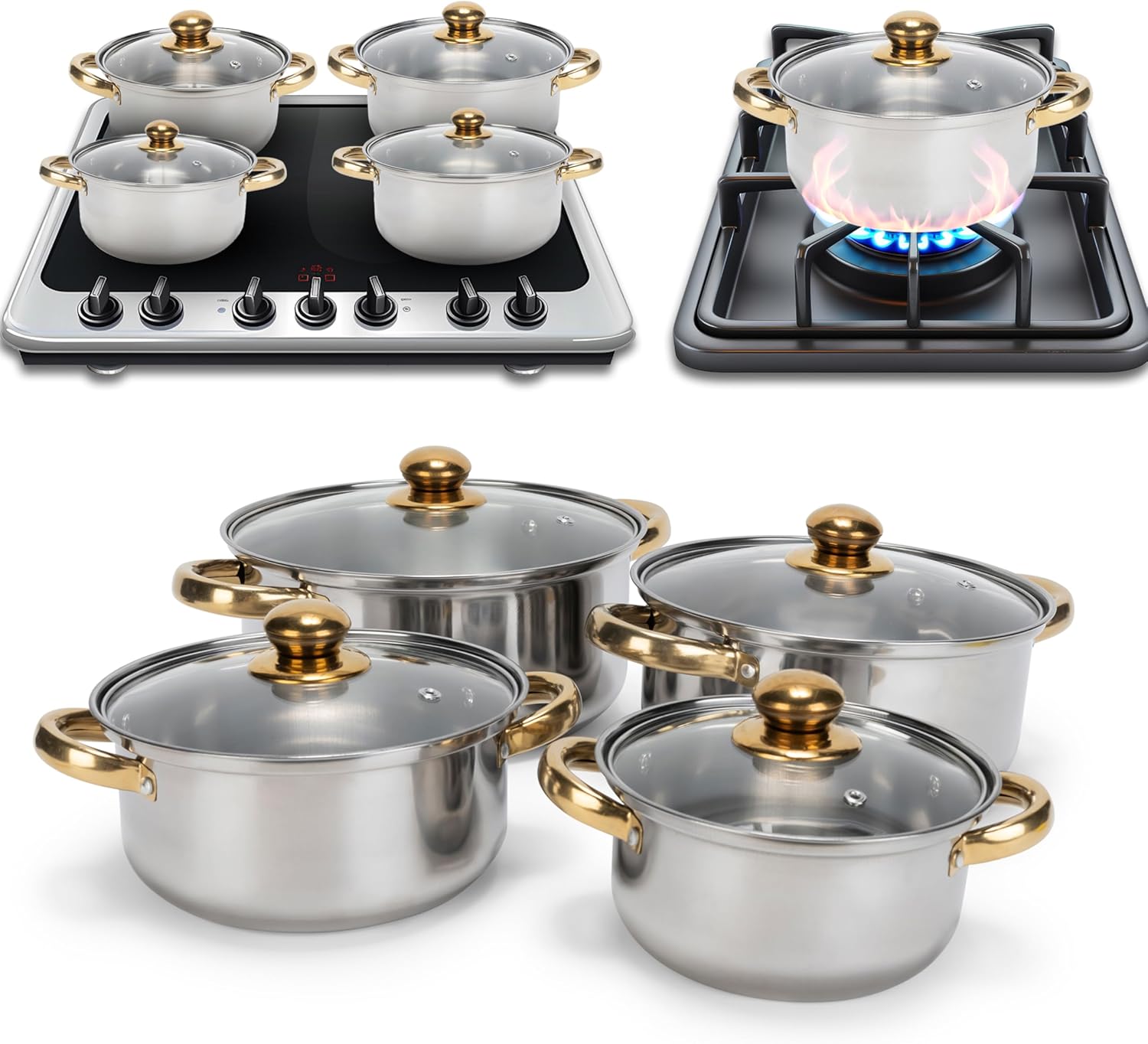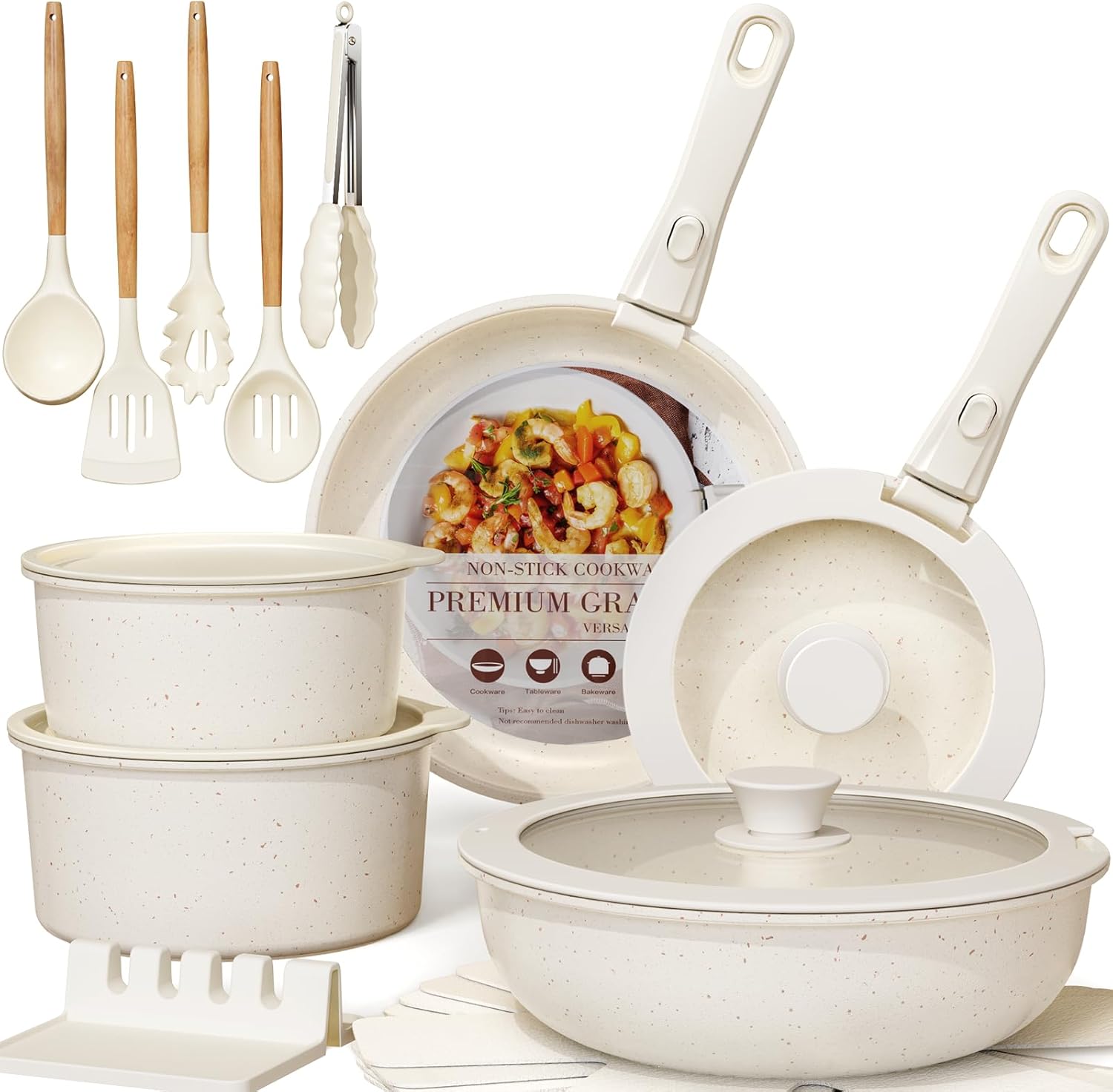Sanding cast iron cookware is an effective way to restore its surface. This process can remove rust, old seasoning, and rough spots.
Many people love cooking with cast iron. It lasts for years and offers great heat retention. However, over time, it can lose its smoothness and beauty. Sanding can help bring back that original shine and make cooking more enjoyable. Whether your skillet has seen better days or you want to enhance your cookware’s performance, sanding is a simple solution.
It allows you to prepare your cast iron for a new seasoning layer, improving its non-stick qualities. Let’s explore how to sand cast iron cookware and the benefits it brings to your kitchen experience.

Credit: www.instructables.com
The Importance Of Smooth Cast Iron
Smooth cast iron cookware is key for great cooking. A smooth surface helps food cook evenly. It also makes cleaning easier. Understanding the benefits of a smooth cooking surface can enhance your culinary experience.
Benefits Of A Smooth Cooking Surface
- Even Heat Distribution: A smooth surface heats evenly. This prevents hot spots that can burn food.
- Better Non-Stick Properties: Smooth surfaces reduce sticking. This allows for easier food release.
- Easier Cleaning: Fewer grooves mean less food residue. Cleaning becomes a quick task.
- Improved Cooking Techniques: A smooth surface allows for better searing and browning.
Pitfalls Of A Rough Cast Iron Texture
- Uneven Cooking: Rough surfaces create hot spots. This leads to unevenly cooked food.
- Sticking Issues: Food is more likely to stick. This can ruin the meal and make cleanup hard.
- Harder to Clean: Grooves trap food particles. This increases the time spent on cleaning.
- Less Control Over Cooking: A rough surface can hinder cooking techniques.
Assessing Your Cast Iron Condition
Understanding the condition of your cast iron cookware is essential. This process helps you decide if sanding is needed. Sanding can restore the surface and improve cooking performance. Regular checks can extend the life of your cookware. Let’s dive into how to assess your cast iron condition.
Identifying When Sanding Is Necessary
Not all cast iron needs sanding. Here are some signs that indicate it may be time:
- Rust spots: Look for any red or orange patches.
- Rough surface: Feel for bumps or unevenness.
- Sticking food: If food sticks despite seasoning.
- Old seasoning: A dull or flaking surface shows wear.
Pre-sanding Inspection Checklist
Before sanding, perform a thorough inspection. Use the following checklist:
| Inspection Item | Status | Action Needed |
|---|---|---|
| Rust Presence | Yes/No | Consider sanding |
| Surface Texture | Smooth/Rough | Sand if rough |
| Food Sticking | Yes/No | Reseason or sand |
| Seasoning Condition | Good/Poor | Sand and reseason |
This checklist helps you make informed decisions about your cookware. Regular inspections can prevent larger issues later.
Choosing The Right Sanding Tools
Choosing the right sanding tools is important for restoring cast iron cookware. The tools you select can affect the outcome. Let’s explore the options for sanding.
Manual Vs. Power Sanding
Both manual and power sanding have their advantages. Each method suits different needs. Here’s a quick comparison:
| Feature | Manual Sanding | Power Sanding |
|---|---|---|
| Control | More control over pressure | Less control; faster removal |
| Skill Level | Requires basic skill | Easy for beginners |
| Cost | Low cost | Higher cost |
| Portability | Highly portable | Less portable |
Manual sanding gives you better control. It allows you to feel the surface. Power sanding is faster and easier for large areas.
Types Of Sandpaper For Cast Iron
Choosing the right sandpaper is essential. Different types work better for specific tasks. Here are the main types:
- Aluminum Oxide: Durable and great for rough surfaces.
- Silicon Carbide: Ideal for wet sanding and finer finishes.
- Garnet: Best for wood but can work for cast iron.
Sandpaper comes in different grits. The grit number tells you how rough the paper is:
- Coarse (40-60 grit): Good for heavy rust removal.
- Medium (80-120 grit): Useful for smoothing rough spots.
- Fine (150-220 grit): Perfect for finishing touches.
Choose your sandpaper based on the task. Always start with a coarser grit. Gradually move to finer grits for a smooth finish.
Pre-sanding Preparation
Before sanding your cast iron cookware, proper preparation is key. This process ensures safety and effectiveness. Two important steps include cleaning the cookware and taking safety measures.
Cleaning The Cookware
Start with a thorough cleaning of your cast iron cookware. Removing old food residue and grease is essential. Here’s how to do it:
- Use hot water and a stiff brush.
- Scrub the surface well. Focus on tough spots.
- For stuck-on food, soak the cookware in warm water.
- Rinse and dry completely with a towel.
Cleaning helps the sanding process. It allows for better surface contact. For best results, repeat this step if needed.
Safety Measures And Protective Gear
Sanding cast iron can create dust. Protecting yourself is important. Follow these safety tips:
- Wear a dust mask to avoid inhaling particles.
- Use safety goggles to shield your eyes.
- Gloves will protect your hands from sharp edges.
Set up your workspace outdoors or in a well-ventilated area. This prevents dust buildup indoors. Keep flammable materials away from your workspace.
Being safe makes your sanding job easier. Prepare properly to enjoy your cast iron cookware for years.
Step-by-step Sanding Process
Sanding cast iron cookware can restore its beauty and functionality. This process removes rust and old seasoning. Follow these steps for a smooth finish.
Starting With Coarse Grits
Begin the sanding process with coarse grit sandpaper. This helps remove heavy rust and old seasoning.
- Use a grit between 60 and 80 for effective removal.
- Wrap the sandpaper around a sanding block for better control.
- Sand in circular motions. Apply even pressure.
Check your progress often. Stop sanding when you see shiny metal.
Progressing To Finer Grits
Once the surface looks clean, switch to finer grits. This step smooths out any scratches.
- Use 120 grit sandpaper first.
- Then move to 220 grit for an even smoother surface.
- Finally, finish with 400 grit for a polished look.
Continue to sand in circular motions. Wipe off dust regularly.
When finished, rinse the cookware with water. Dry it thoroughly. This prepares it for seasoning.
Post-sanding Practices
After sanding cast iron cookware, follow these essential post-sanding practices. Proper steps ensure your cookware is ready for use. Cleaning and inspecting are vital to maintain its quality.
Cleaning After Sanding
Cleaning is the first step after sanding. Dust and debris can affect the cookware’s surface. Follow these steps for effective cleaning:
- Use a damp cloth to wipe off dust.
- Wash the cookware with warm, soapy water.
- Rinse thoroughly to remove all soap residue.
- Dry the cookware immediately with a soft towel.
Ensure no moisture remains. This prevents rust. If necessary, repeat the washing process.
Inspecting The Smoothness
After cleaning, inspect the cookware. A smooth surface is important for cooking. Here’s how to check for smoothness:
- Run your fingers over the surface.
- Feel for any rough spots or imperfections.
- Use a clean cloth to assess the finish.
If you find rough areas, consider sanding again. A smooth surface helps food cook evenly.
Lastly, check for any signs of rust. Treat rust spots immediately. This keeps your cookware in top condition.
Seasoning Your Sanded Cast Iron
Seasoning your sanded cast iron cookware is vital. It protects the surface and enhances flavor. Proper seasoning makes cooking easier. It also helps in maintaining the cookware.
The Importance Of Re-seasoning
Re-seasoning your cast iron is necessary after sanding. Sanding removes old seasoning layers. This exposes raw metal. Without seasoning, cast iron can rust.
Here are some benefits of re-seasoning:
- Creates a non-stick surface.
- Improves the flavor of food.
- Protects against rust and damage.
- Extends the life of your cookware.
Best Oils For Seasoning
Choosing the right oil is essential. Not all oils work well for seasoning. Here are some top choices:
| Oil Type | Smoke Point (°F) | Benefits |
|---|---|---|
| Flaxseed Oil | 225 | Forms a strong layer |
| Canola Oil | 400 | Affordable and versatile |
| Grapeseed Oil | 420 | High smoke point |
| Vegetable Oil | 400 | Widely available |
Use any of these oils for best results. They help create a durable seasoning layer. Apply a thin coat before heating.

Credit: www.reddit.com
Maintenance Tips For Your Newly Smoothed Cookware
Maintaining your newly smoothed cast iron cookware is essential. Proper care keeps it in great shape. Follow these tips for long-lasting performance.
Regular Cleaning And Care
Clean your cast iron cookware after each use. Use hot water and a gentle scrubber. Avoid soap, as it can strip the seasoning.
For tough stains, use coarse salt. It acts as a natural scrubber. Rinse and dry immediately to prevent rust.
Apply a thin layer of oil after cleaning. This helps maintain the seasoning. Store your cookware in a dry place.
Avoiding Common Mistakes
- Don’t soak your cast iron. Soaking can cause rust.
- Avoid high heat when cooking. High temperatures can damage the seasoning.
- Never use metal utensils on the surface. They can scratch the seasoning.
- Don’t use the dishwasher. It can ruin the finish.
Follow these tips. They will help keep your cookware smooth and functional. Enjoy cooking with your cast iron for years to come.
Troubleshooting Common Sanding Issues
Sanding cast iron cookware can be tricky. Problems can arise during the process. Understanding these issues helps you achieve the best results.
Dealing With Uneven Surfaces
Uneven surfaces can affect cooking. Here are steps to fix them:
- Use coarse sandpaper first. Start with 80-grit paper.
- Sand in a circular motion. This helps even out the surface.
- Check your progress often. Stop if you see improvement.
- Switch to finer sandpaper. Use 220-grit to smooth the surface.
Remember to wear a mask. Dust can be harmful. Work in a well-ventilated area.
When To Seek Professional Help
Sometimes, sanding can be too much. Here are signs you need help:
- Deep rust is present. It may require special tools.
- Surface damage is severe. A professional can restore it properly.
- You feel unsure about the process. It’s okay to ask for help.
Finding a good professional is important. Ask for recommendations. Check reviews online. Ensure they have experience with cast iron.

Credit: www.reddit.com
Frequently Asked Questions
How Do I Sand Cast Iron Cookware?
To sand cast iron cookware, first, remove any seasoning. Use a fine-grit sandpaper or sanding sponge for best results. Sand the surface evenly to eliminate rust and rough spots. Be sure to clean the cookware thoroughly after sanding to remove any dust before reseasoning.
Why Should I Sand My Cast Iron?
Sanding cast iron helps restore its smooth surface. It removes rust, buildup, and imperfections that can affect cooking. A smooth surface allows for better seasoning and easier food release. This process prolongs the life of your cookware and enhances its performance over time.
What Tools Do I Need For Sanding Cast Iron?
For sanding cast iron, you will need fine-grit sandpaper or a sanding sponge. A wire brush can also be useful for tough rust. Additionally, have mineral oil or cooking oil ready for lubrication. Finally, keep cleaning supplies on hand to remove dust and debris after sanding.
Can I Use A Power Sander On Cast Iron?
Yes, you can use a power sander, but with caution. A power sander can speed up the process but may damage the cookware if not used carefully. Always start with a low setting and check your progress frequently. Manual sanding is often safer for preserving the cast iron’s integrity.
Conclusion
Sanding cast iron cookware is a useful skill. It helps restore old pans and makes them like new. A smooth surface improves cooking and cleaning. Proper care keeps your cookware lasting longer. Remember to season your cast iron after sanding.
This adds a protective layer. Enjoy cooking with your restored pans. They can bring joy to your kitchen for years. Try sanding and see the difference it makes. A little effort goes a long way. Happy cooking!




Leave a Reply